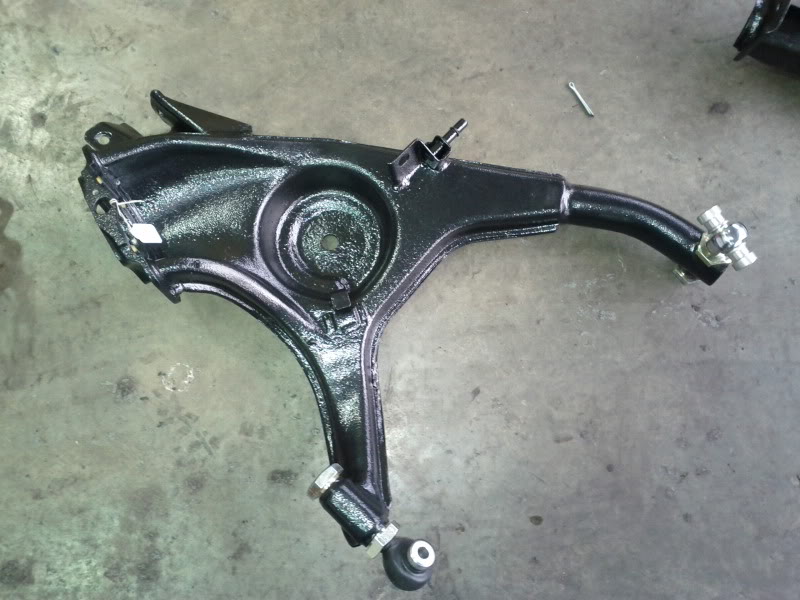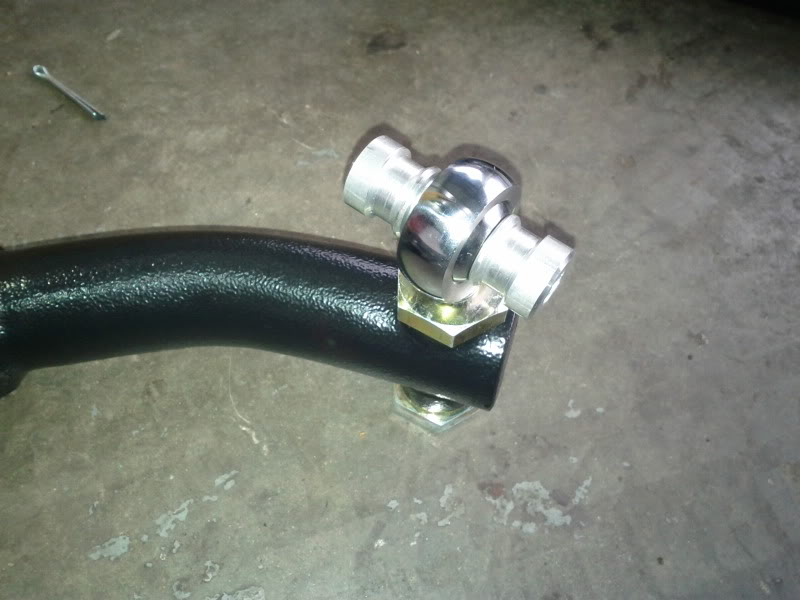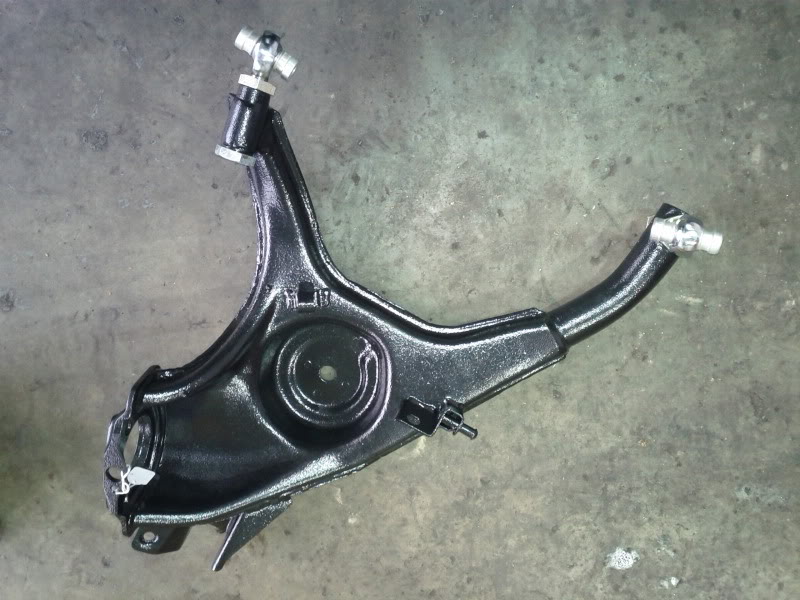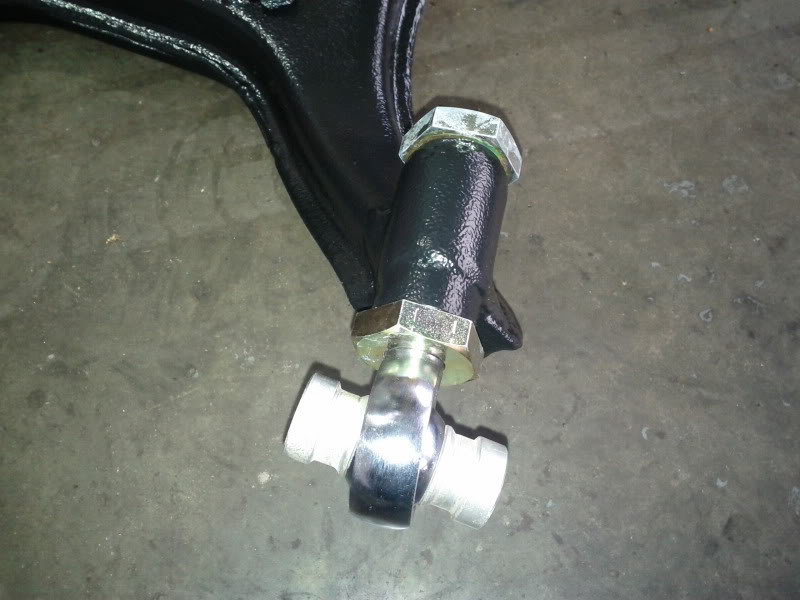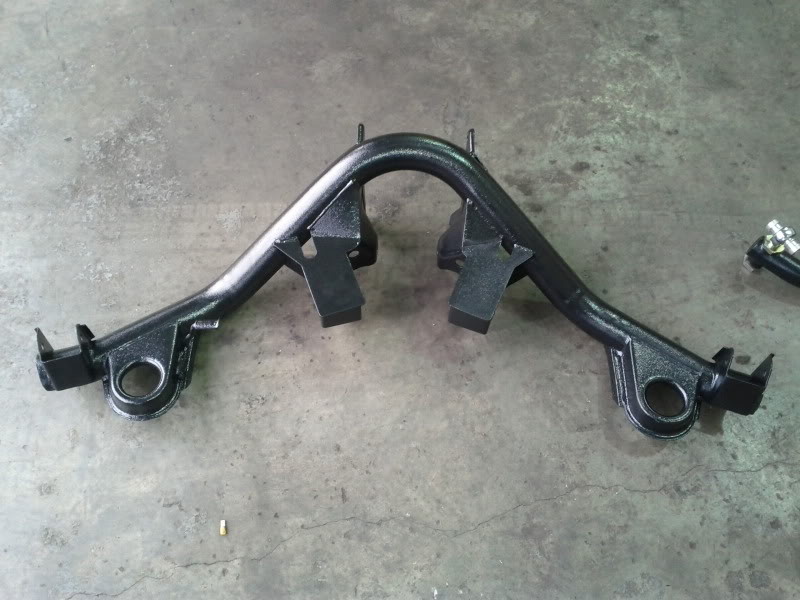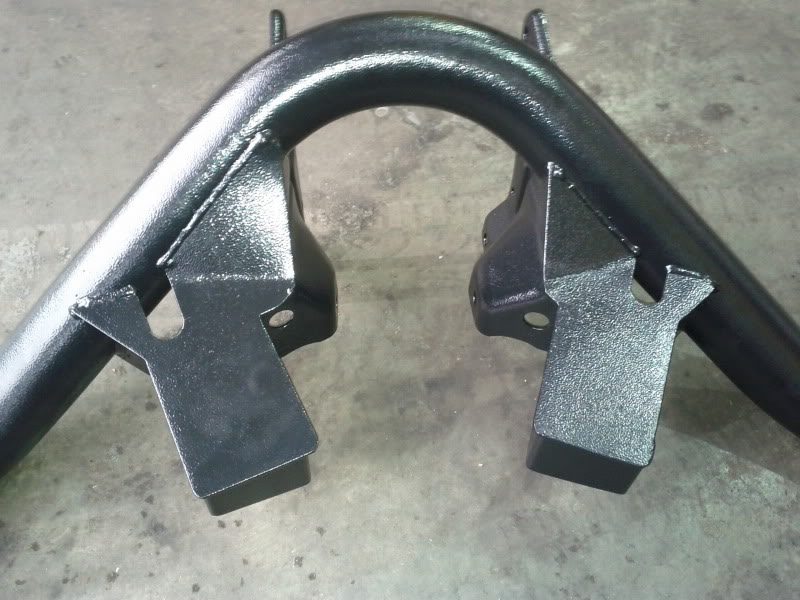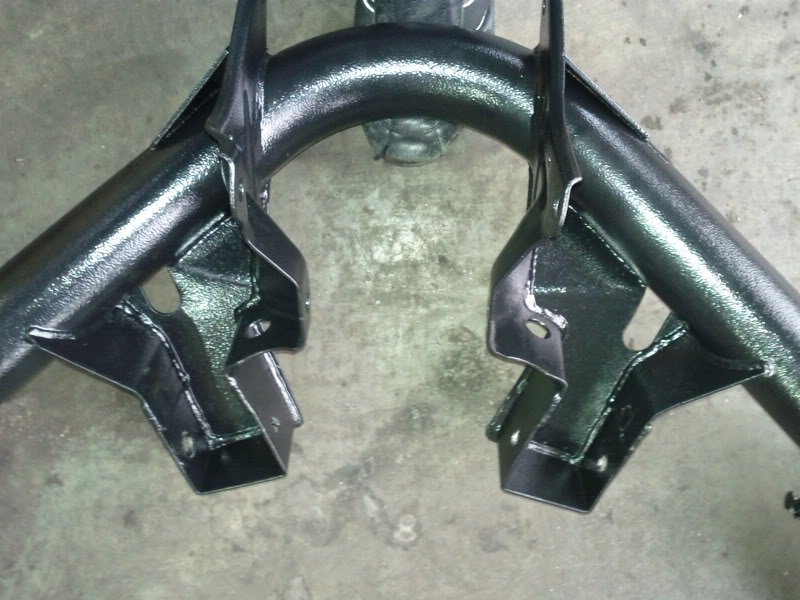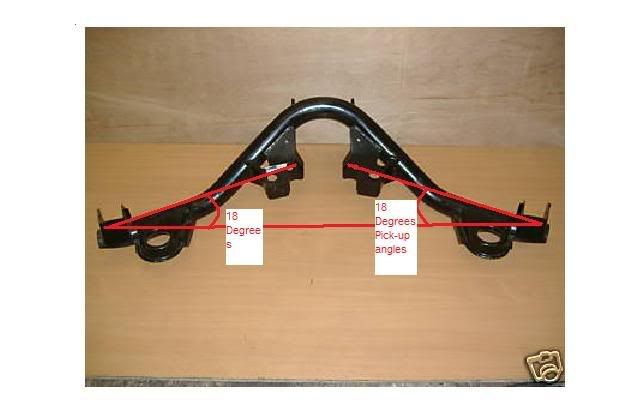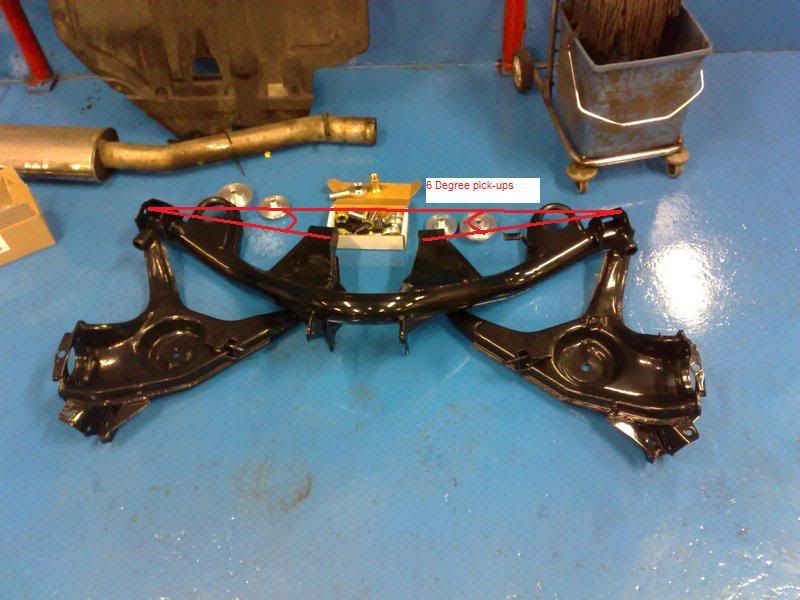6 Degree Beam - info needed
#81
It's not a case of one setting fits all, it depends entirely on how the car is intended to be used, so you tailor the settings to suit 
 .
.
I have tried the Zoo beam and Ahmed's / SCS beam and they were both equal handling once fitted to the car. The only thing with the double adjustable Zoo beam was that it was VERY tricky (more time consuming) to set up due to adjustments made on the toe affecting the camber as well and the bolt that came with it as standard wasn't long enough (I've even heard of people's falling out ). Obviously it was nowhere near as well made (as has been commented on), but even Ahmed said that despite this aspect, it was one of the better ones he had seen.
). Obviously it was nowhere near as well made (as has been commented on), but even Ahmed said that despite this aspect, it was one of the better ones he had seen.
At the end of the day, you pay your money and make your choice. If you buy one of the following beams, I'm sure you won't have any issues what-so-ever:
SCS
Ahmed Bayjoo
Turbosystems
MK Motorsport
Get it wrong though and the car can handle worse than with the standard beam .
.
The beam is one of the BEST things you can do to a Cossie and if you want to understand why, read my article I did for Fast Ford:
http://www.randbmotorsport.co.uk/sho...Suspension.pdf

I have tried the Zoo beam and Ahmed's / SCS beam and they were both equal handling once fitted to the car. The only thing with the double adjustable Zoo beam was that it was VERY tricky (more time consuming) to set up due to adjustments made on the toe affecting the camber as well and the bolt that came with it as standard wasn't long enough (I've even heard of people's falling out
 ). Obviously it was nowhere near as well made (as has been commented on), but even Ahmed said that despite this aspect, it was one of the better ones he had seen.
). Obviously it was nowhere near as well made (as has been commented on), but even Ahmed said that despite this aspect, it was one of the better ones he had seen.At the end of the day, you pay your money and make your choice. If you buy one of the following beams, I'm sure you won't have any issues what-so-ever:
SCS
Ahmed Bayjoo
Turbosystems
MK Motorsport
Get it wrong though and the car can handle worse than with the standard beam
 .
.The beam is one of the BEST things you can do to a Cossie and if you want to understand why, read my article I did for Fast Ford:
http://www.randbmotorsport.co.uk/sho...Suspension.pdf
Regarding a 0 degrees beam... With 0 degrees you don't get any additional camber when cornering, so that would not be optimal.
#82

After a beam Ste
#84
another spanner in the works....
what about scorpio cosworth beam geometry???
based on same basic design as normal cossie beam but with different trailing arms to achieve a wider track with longer stronger driveshafts.
Was the geometry improved for that beam??? and is there any reason why that cannot be made adjustable like the normal cossie beams??
what about scorpio cosworth beam geometry???
based on same basic design as normal cossie beam but with different trailing arms to achieve a wider track with longer stronger driveshafts.
Was the geometry improved for that beam??? and is there any reason why that cannot be made adjustable like the normal cossie beams??
#90
Do all these 6 degree beams have dust covers over the rose joints, just like the standard Ford rose joints have dust covers? Otherwise I'd expect the joints wear very quickly when using them on the road with all the dirt and salt on the roads in the winter...
#91
No - but if you know where to get some please show me - I've been looking for ages!
#92
Can you not use rose joints with grease nipples in them so you can give them a pump full of gease every so often to keep the shit out of them?.I know most are self lubeing but that dosenty really work in the real world lol. I work for daf trucks and they went for sealed for life / self lubeing on things like prop ujs when they all started to wear out or seized up due to water/salt and general road shit they came up with a mod lol fit ones with grease nipples! (just like they had been for years and years without problems before they changed lol)
Last edited by ajamesc; 30-10-2011 at 07:51 PM.
#93
Look on eBay for rubber boot spherical bearing.
#94
#95
Spot on cheers Neil
#99
#100
#101
more accurate adjustment by doing both joints. it's alot easier for the person making them just to do 1 joint on each arm, also cheaper. it doesn't realy make sense to only do 1, mainly because of the cost of the original ford bushes that you need to put in before fitting your beam + easier to change when the bushes wear out. winner all round imo.
#105
As long as the car and jig is 100% as you can run our of adjustment as we found out on a good customers car
#108
From looking at those pics I'd say those inner mounting points are only placed about 35 to 40mm to the front, which would make the beam about 13 to 14 degrees, instead of 6... 
Last edited by Marc sierra; 18-01-2012 at 02:22 PM.
#111
A short while ago I did some calculations for the Sierra rear beam and posted them on a different forum (fordpower.org.uk). The calculations are for a standard beam versus 6 degree beam (both slightly lowered). Calculations for the Granada mk3 would be slightly different because of the 2 cm wider track, higher ride height and bigger tyre diameter.
This graph shows the camber curves for the suspension travel. Normal ride height is at 13 cm (bottom beam to ground). I've fitted the camber curve to -1.5 degrees at normal ride height, as that is what is assumed optimal. You can see the camber gain on the 6 degree beam is a lot less, which is nice for grip during acceleration and heavy loads in the boot.
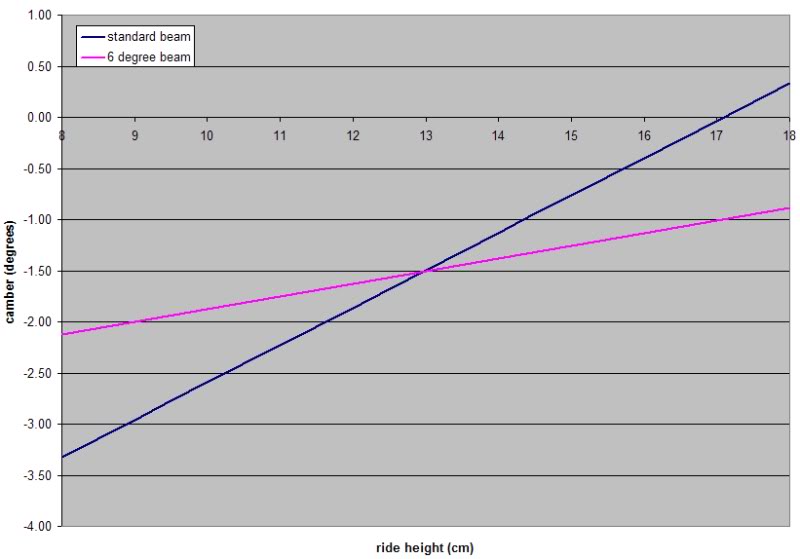
The next graph shows the toe curves for the suspension travel. I've fitted the toe curve to 0.23 degrees toe in (about 1.5 mm toe in each side with 15" wheels). The 6 degree beam also changes toe a lot less compared to the standard beam.
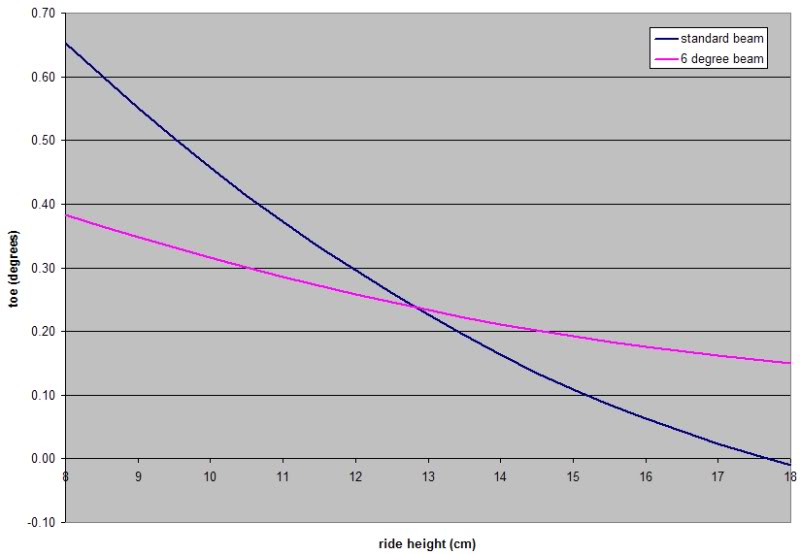
I thought it would also be nice to see the camber while cornering. So I calculated the camber corrected for the roll angle, the graph shows the camber of both wheels as a function of the roll in cm between left and right wheel (2 cm roll is 1 cm compression on outer wheel and 1 cm rebound on the inner wheel, compared to the track width). It shows that the standard beam actually has nicer camber curves while cornering. During hard cornering the wheels stay flatter on the road compared to the 6 degree beam.
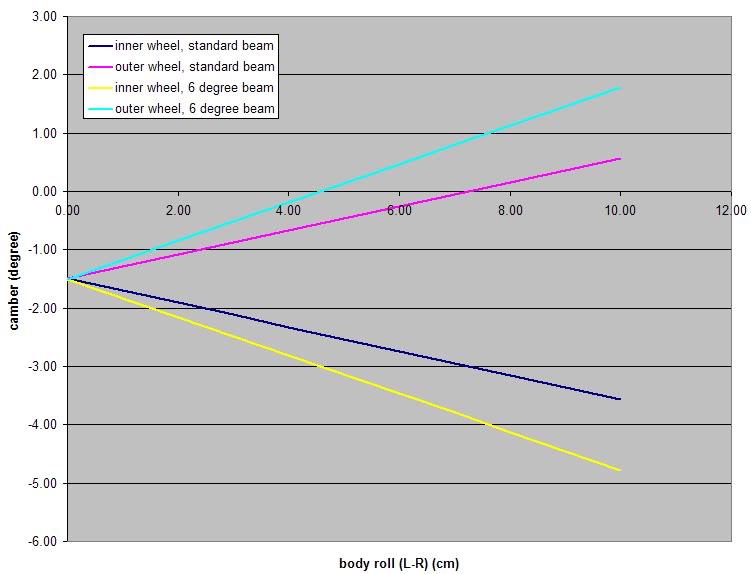
The last graph I did shows the toe angles of both wheels during cornering. I also put the drive angle in, which is the average angle of inner and outer wheel. When the value is positive it means understeer (rear wheels steer the same way as front). The drive angle is a lot less on the 6 degree beam, which is the reason the car understeers a lot less which such a beam fitted.

The big change in drive angle on the standard rear beam is also the reason why the car can be hard to drift. Getting the car to drift is more difficult due to the understeer. But when the car is already oversteering, the front wheels are pointing the other way (opposite lock) than the rear wheels. When the car stops oversteering this means it will try to make the car spin, which explains the 'snaking' behaviour.
This graph shows the camber curves for the suspension travel. Normal ride height is at 13 cm (bottom beam to ground). I've fitted the camber curve to -1.5 degrees at normal ride height, as that is what is assumed optimal. You can see the camber gain on the 6 degree beam is a lot less, which is nice for grip during acceleration and heavy loads in the boot.

The next graph shows the toe curves for the suspension travel. I've fitted the toe curve to 0.23 degrees toe in (about 1.5 mm toe in each side with 15" wheels). The 6 degree beam also changes toe a lot less compared to the standard beam.

I thought it would also be nice to see the camber while cornering. So I calculated the camber corrected for the roll angle, the graph shows the camber of both wheels as a function of the roll in cm between left and right wheel (2 cm roll is 1 cm compression on outer wheel and 1 cm rebound on the inner wheel, compared to the track width). It shows that the standard beam actually has nicer camber curves while cornering. During hard cornering the wheels stay flatter on the road compared to the 6 degree beam.

The last graph I did shows the toe angles of both wheels during cornering. I also put the drive angle in, which is the average angle of inner and outer wheel. When the value is positive it means understeer (rear wheels steer the same way as front). The drive angle is a lot less on the 6 degree beam, which is the reason the car understeers a lot less which such a beam fitted.

The big change in drive angle on the standard rear beam is also the reason why the car can be hard to drift. Getting the car to drift is more difficult due to the understeer. But when the car is already oversteering, the front wheels are pointing the other way (opposite lock) than the rear wheels. When the car stops oversteering this means it will try to make the car spin, which explains the 'snaking' behaviour.
#114
it all make more sense, now. so is it fair to say the reason ford produce the std beam like they did was to bias the handling more towards understeer, to make a standard sierra easier to drive in all conditions, and less likely to bite back?
#115
They definately biased the car towards understeer. But I don't know if that was the reason they chose the 18 degrees semi-trailing arm beam. That setup also makes the car very twitchy under braking, as the rear wheels start to toe out as the suspension rises.
Perhaps they chose the setup for the camber change instead of the toe curve. The camber curve matches the "lean" of the car better than the 6 degree beam does. When reading under introduction test of the Sierra they said that the 18 degree angle was the optimal angle for the semi-trailing arm setup.
BMW also used the semi-trailing arm setup for a while. They started with a 20 degree setup on the E12 (5 series) and E21 (3 series), but later changed this to 13 degrees on the later 5 series and 15 degrees on the later 3 series. Apparently they also found out it was better to reduce the angle. The early BMW's were also famous for being tail-happy, something that was improved a lot on the later models.
Perhaps they chose the setup for the camber change instead of the toe curve. The camber curve matches the "lean" of the car better than the 6 degree beam does. When reading under introduction test of the Sierra they said that the 18 degree angle was the optimal angle for the semi-trailing arm setup.
BMW also used the semi-trailing arm setup for a while. They started with a 20 degree setup on the E12 (5 series) and E21 (3 series), but later changed this to 13 degrees on the later 5 series and 15 degrees on the later 3 series. Apparently they also found out it was better to reduce the angle. The early BMW's were also famous for being tail-happy, something that was improved a lot on the later models.
#116
Youd think so but not, due to the massive geometry changes it makes the car more likely to snap back
#117
When mine was on standard beam, it was very forgiving if you got close to the limit, lift off and it would snap back. Not so now....
Last edited by MAD Ade; 18-01-2012 at 08:37 PM.



